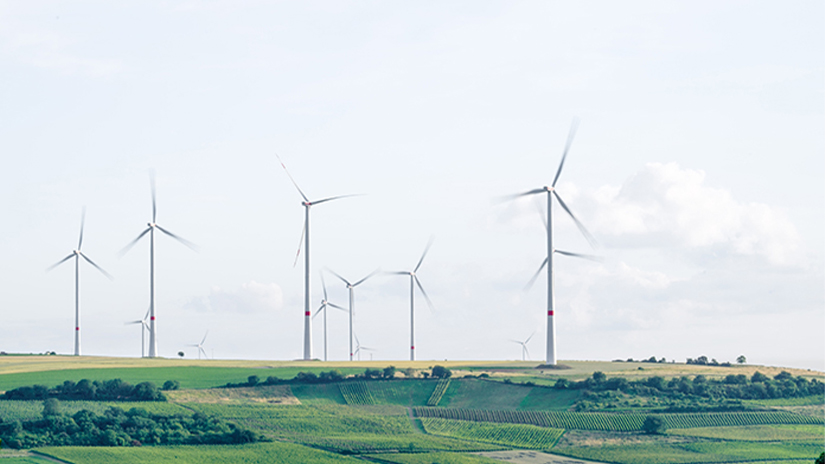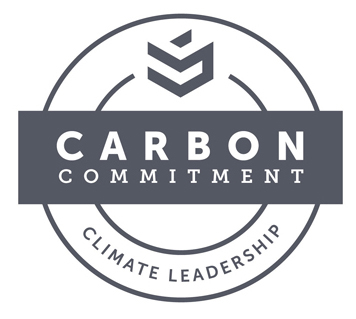Want to find out more about the tipping point? Read Bill McKibben's article, "Global Warming's Terrifying New Math". And learn about three simple numbers that add up to global catastrophe.
See who has already taken the pledge.
Buy organic and local.
When possible, buy organic or "fair trade." There's a better chance the food was grown
in an eco-friendly way, and if it's locally grown, it didn't have to travel that far.
This also goes for those double lattes — coffee often has a large carbon footprint
because of the distance those beans had to travel to get here, and how they were produced.
Also, try eating at restaurants that serve locally produced or seasonal foods.
Use sustainable transportation.
Try biking, walking, bussing or carpooling to work or to run errands. One person switching
to public transit can reduce daily carbon emissions by 20 pounds, or more than 4,800
pounds in a year.
Pay attention to packaging.
When out shopping, try to go to stores or co-ops that keep packaging to a minimum.
For example, you may chose to buy the loose tomatoes rather than boxed or plastic-wrapped
tomatoes. Also, take reusable bags to the grocery store. When it comes to resources,
plastic is better than paper — but a reusable cloth tote-style bag is better still.
Ditch bottled water.
Bottled water has a huge carbon footprint — it's bottled at one location in small
plastic bottles and shipped all over. Try buying a reusable water bottle or canteen
for your water. Also, a lot of restaurants have made the move from offering fancy
bottled water, usually imported from an exotic source, to using in-house filtration
systems that make tap water a good choice. Many plastic water bottles are recycled,
but most are not, making the footprint even bigger.
Energy-proof your home.
We're not talking major upgrades here... Make sure all of your windows close properly
and that the attic in your home is properly insulated. This can save you big bucks
on your energy bill. Also, keep your heating and cooling systems properly maintained,
and switch to reusable filters when possible. Try switching from incandescent to compact
florescent light bulbs. Compact florescent light bulbs use about 75 percent less energy
than our normal light bulbs and last much longer. Compared to regular bulbs, the fluorescents
are more expensive, but they will eventually pay for themselves due to lower energy
costs.
Go native.
Use native plant species to landscape around your home or business. The plants will
probably grow better in a familiar environment, and the plants may also get shipped
a shorter distance to get to your local nursery. Also, use organic soil when planting
— it's made using more eco-friendly methods, and uses less resources. And remember,
green plants are a good way to offset carbon. So plant something, anything — it helps.
Take a direct flight.
If you need to travel by airplane, try taking a direct flight when at all possible.
Your impact is reduced when you take one flight, as opposed to hopping on a couple
or more passenger jets to reach your final destination. You might also feel a little
less harried when you arrive, because changing planes can be a real hassle.
Switch water heaters to vacation mode.
Most water heaters have a "vacation" setting for when you are away from home for an
extended period of time. Switching to that "away" mode still keeps the water warm,
but will not use the energy it takes to keep a tank full of piping-hot water. Enjoy
your vacation even more, knowing that you're saving money and reducing your footprint.
Unplug it!
Unplug appliances that you don't use frequently. Most electronics have a standby mode
that siphons energy even when not in use. Cell phone chargers, laptops, televisions,
stereos — there's a whole list of items that should be unplugged when not in use.
Try using a power strip for groups of electronic items. One flick of the switch and
it's all off.
Use cold water.
No, not in the shower... but maybe in the washer. Try using cold water to launder
things that don't need to be cleaned in hot or warm water. It takes a lot of energy
to heat up water — multiply that by the number of loads, and that's a big footprint.
Most major detergent makers sell detergents designed to have the same cleaning power
as with regular soap. Try washing mixed loads in cold water, too.
Get together.
Family gatherings are a good way to spend some quality time with loved ones, with
very little carbon impact. Cooking and entertaining for larger groups is more efficient
and, per person, a lot less expensive. And who can put a price on these "carbon freebies"?
Make time for errands.
A lot of us try to run errands in-between work and other commitments. Try bundling
errands together to reduce how far you need to travel. Going back-and-forth to the
same part of town on different days to run errands uses more gas than if you planned
and did everything in the same area all at once. And if you really want to make it
a "carbon freebie”, try carpooling and running errands with a buddy.
The Three Rs: Reduce, Reuse, Recycle.
It seems like something from a kid's sing-a-long, but sometimes we lose sight of just
how much we buy. Try window shopping before you purchase to make sure you're not "impulse
buying". Buying less, and reusing and fixing things when you can instead of buying
new is a great way to save money and reduce your carbon footprint. And for a lot of
people, recycling is as easy as rolling the trash bin to the curb. Just remember to
do it at work, too.




